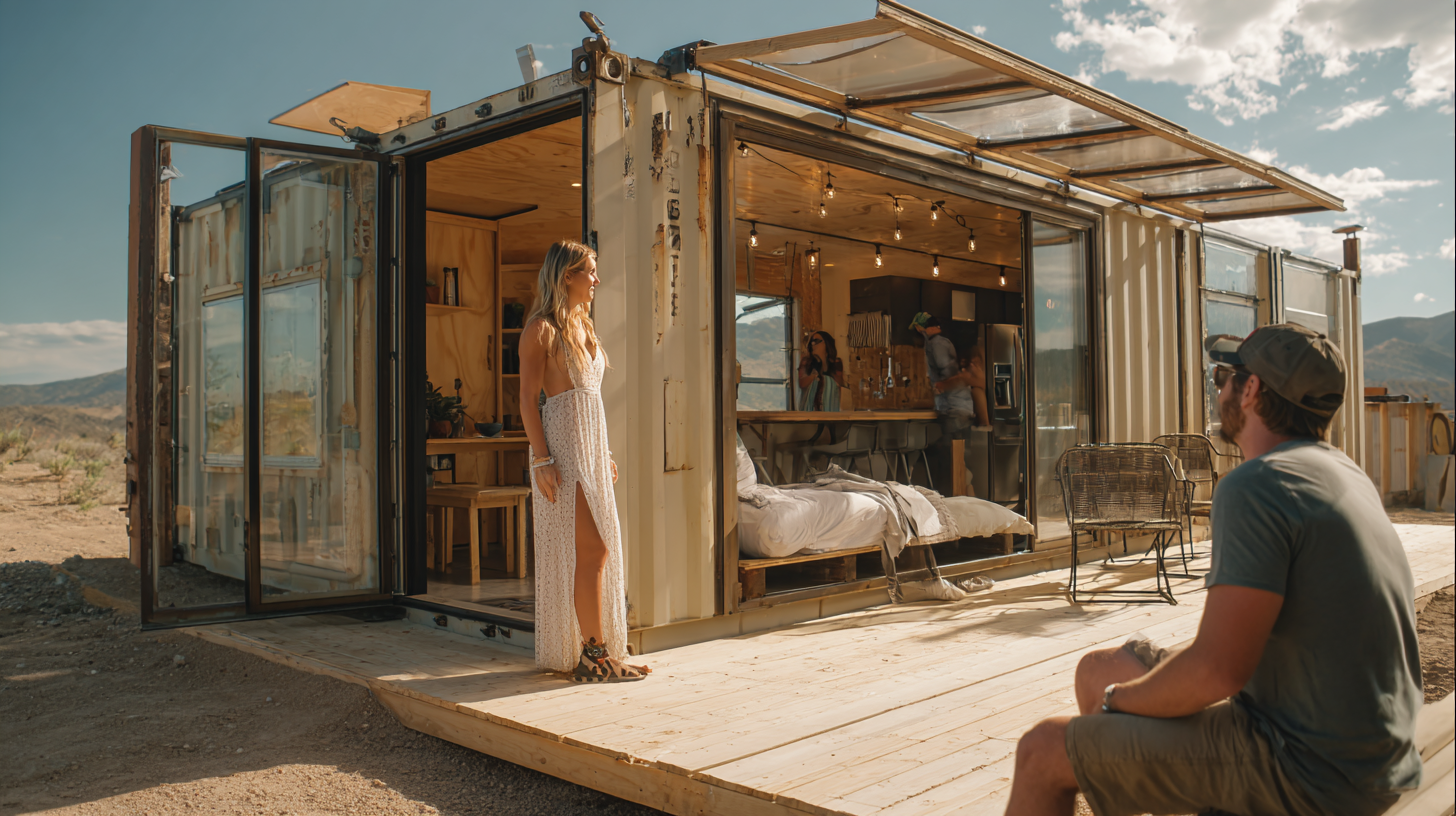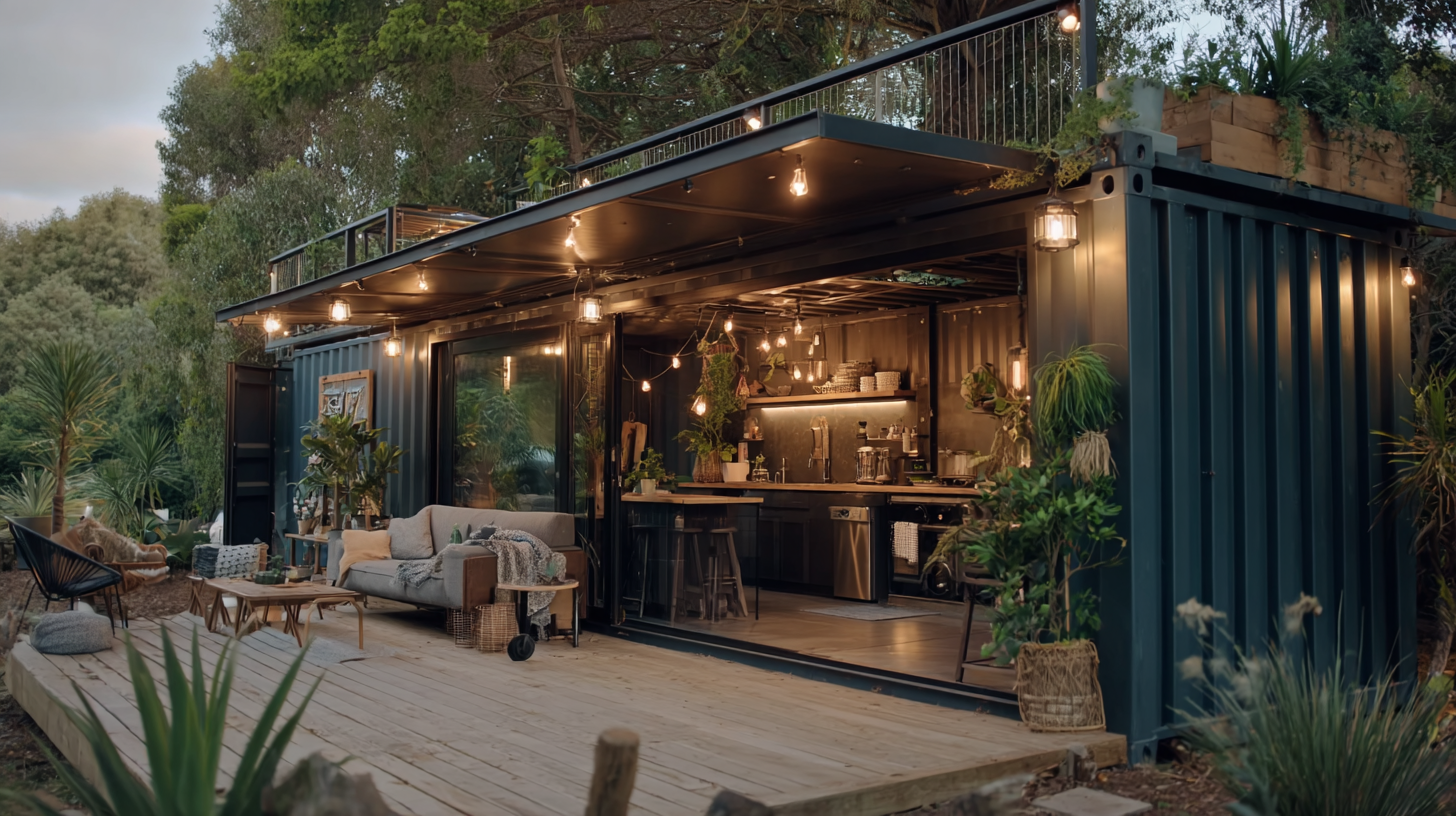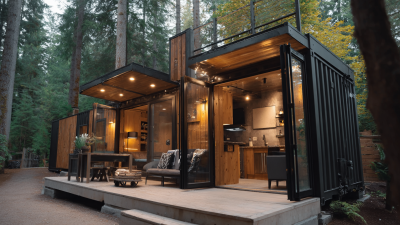Unlocking the Future of Sustainable Living through Innovative Container Conversions
In today's rapidly evolving world, the concept of sustainable living has gained unprecedented importance, urging individuals and communities to seek innovative solutions for a greener future. One promising avenue for achieving this is through container conversions. These creative transformations of shipping containers into functional and stylish living spaces not only promote environmental sustainability but also challenge traditional housing norms. By repurposing materials that would otherwise contribute to waste, container conversions exemplify a resourceful approach to sustainable architecture. In this guide, we will explore the myriad possibilities that container conversions offer, from eco-friendly homes to community spaces, while providing practical tips on how to embark on your own journey toward sustainable living. Join us as we unlock the potential of these versatile structures and discover how they can shape a more sustainable future for us all.

Reimagining Container Spaces: The Rise of Eco-Friendly Living Solutions
 The trend of transforming shipping containers into eco-friendly living spaces is reshaping our understanding of sustainable architecture. These innovative conversions leverage the sturdy structure of containers, providing a cost-effective and environmentally responsible alternative to traditional housing. By reimagining these industrial relics, designers and architects are not only minimizing waste but also maximizing the potential for creative and functional living solutions. Container homes can be equipped with solar panels, rainwater harvesting systems, and energy-efficient appliances, significantly reducing their carbon footprint.
The trend of transforming shipping containers into eco-friendly living spaces is reshaping our understanding of sustainable architecture. These innovative conversions leverage the sturdy structure of containers, providing a cost-effective and environmentally responsible alternative to traditional housing. By reimagining these industrial relics, designers and architects are not only minimizing waste but also maximizing the potential for creative and functional living solutions. Container homes can be equipped with solar panels, rainwater harvesting systems, and energy-efficient appliances, significantly reducing their carbon footprint.
The rise of container-based homes also highlights the growing demand for adaptable and portable living solutions. In urban environments where space is limited and housing prices continue to soar, containers offer a versatile option that can be customized to fit various needs and lifestyles. From compact studio apartments to multi-unit complexes, these repurposed structures can be designed to blend seamlessly into their surroundings while promoting sustainable living practices. As communities begin to embrace these eco-friendly alternatives, the future of housing looks increasingly innovative and sustainable.
Innovative Design Strategies for Transforming Shipping Containers into Homes
Innovative design strategies for transforming shipping containers into homes are at the forefront of sustainable living solutions. In recent years, architects and designers have reimagined these sturdy steel boxes, typically associated with global transportation, into versatile and eco-friendly living spaces. For instance, the 40-ft off-grid tiny house built from a shipping container showcases how smart design can create cozy interiors while maintaining sustainability. Such designs not only meet the growing demand for affordable housing but also prioritize renewable materials and energy-efficient techniques.

Moreover, the adaptability of shipping containers has been utilized to address housing crises across different regions, such as Ghana, where they are being transformed into eco-friendly homes to provide much-needed shelter. This trend reflects a significant shift in urban living, where container-based housing offers quick construction times combined with durability—a perfect fit for cities looking to innovate housing solutions. As more designers explore these strategies, the future of sustainable living looks promising, with shipping containers at its heart.
Embracing Circular Economy: Upcycling Container Structures for Sustainable Living
The concept of a circular economy is gaining traction as communities seek innovative solutions for sustainable living. Upcycling container structures is at the forefront of this movement, transforming unused shipping containers into functional living spaces. This approach not only repurposes materials that would otherwise contribute to waste but also reduces the consumption of new resources, creating a more efficient life cycle for building materials.
By embracing upcycled containers, we can reimagine urban landscapes. These adaptable structures can serve various purposes including homes, community centers, and even green spaces, fostering a sense of community while minimizing environmental impact. Moreover, the modular nature of containers allows for seamless integration into existing neighborhoods, promoting sustainable urban development and encouraging residents to engage with their environment in a more meaningful way. This innovative approach represents a practical step towards harmonizing modern living with ecological responsibility, paving the way for a greener future.
Smart Technologies Enhancing Efficiency in Container-Based Communities
The integration of smart technologies is revolutionizing container-based communities, driving them towards enhanced efficiency and sustainability. As urban digitalization becomes a key aspect of global development, the convergence of advanced technologies like IoT and AI offers unprecedented opportunities for innovative container conversions. These technologies enable real-time monitoring and management of resources, ensuring that energy use, waste management, and community services are optimized for both environmental sustainability and operational efficiency.
Moreover, the implementation of smart systems within container communities can mirror the advancements seen in intelligent port operations, where automation and remote management have drastically improved performance and safety. By adopting similar smart infrastructure solutions, container-based living environments can achieve greater connectivity and resilience. This synergy between innovative design and cutting-edge technology not only enhances the livability of these communities but also positions them as vital components in the broader movement towards sustainable urban living.
Unlocking the Future of Sustainable Living through Innovative Container Conversions - Smart Technologies Enhancing Efficiency in Container-Based Communities
| Dimension | Description | Impact | Technology Used |
|---|---|---|---|
| Energy Efficiency | Utilization of renewable energy sources to power container homes. | Reduces carbon footprint and lowers energy costs. | Solar panels, wind turbines. |
| Water Management | Systems for rainwater collection and wastewater recycling. | Conserves water and reduces waste disposal costs. | Smart irrigation, greywater systems. |
| Smart Home Automation | Integration of smart devices for monitoring and control. | Enhances convenience, security, and energy management. | IoT devices, AI-based systems. |
| Material Reuse | Repurposing shipping containers for housing and facilities. | Reduces construction waste and promotes sustainability. | Structural reinforcement techniques. |
| Community Engagement | Encouraging residents to participate in sustainability initiatives. | Fosters community spirit and shared responsibility. | Social media platforms, workshops. |
Case Studies: Successful Container Conversions Leading the Green Revolution
Innovative container conversions have emerged as a cornerstone of sustainable living, with various successful case studies illuminating their potential to drive the green revolution. One notable example is the conversion of shipping containers into eco-friendly homes. These structures not only utilize recycled materials but also incorporate renewable energy sources such as solar panels, reducing reliance on traditional energy grids. This approach has been successfully implemented in communities across the globe, demonstrating significant reductions in carbon footprints and fostering a sense of community among residents committed to sustainable practices.

Another inspiring case comes from urban agriculture initiatives that have repurposed containers into mobile farms. These farms, equipped with hydroponic systems, maximize space and resources while providing fresh produce to city dwellers. By utilizing containers, these projects minimize land use and transportation emissions, proving that sustainable food systems can thrive within urban settings. Additionally, they offer educational opportunities for local communities, raising awareness about food sustainability and fostering a culture of environmental stewardship. Such initiatives highlight the transformative impact of container conversions on both living spaces and food production, encouraging further innovation in sustainable development.



